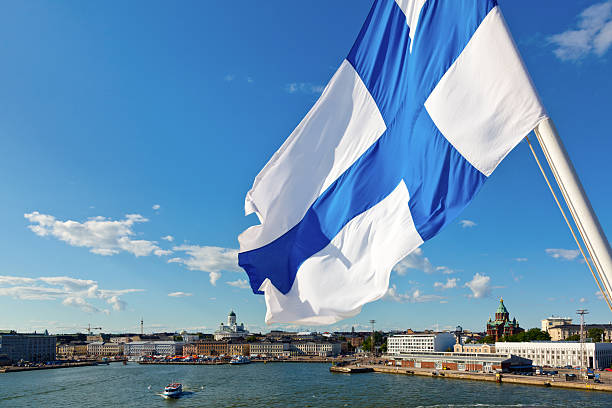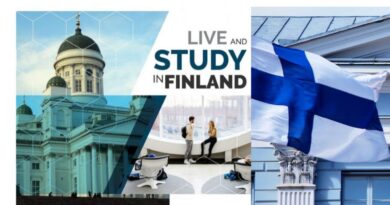Surprising Facts About Study In Finland
There has been a lot of press recently about how the education system in Finland and the benefits to study in Finland. Finland is one of the best education systems in the world and how they are using radical (in contrast to the US and the UK) ideas to help get the distinction of being among the best.
The evidence is clear wherever you turn, but how exactly is the Finnish educational system managing to be so successful? In most, if not all, subjects, their kids do better than students in the US and the UK, and their instructors have a considerably better work-life balance. Let’s examine some of the actions taken by the Finns.
American and British students are significantly falling behind in many educational performance assessments, according to data regularly released by the Organization for Economic Cooperation and Development (OECD) for International Student Assessment (PISA), a survey conducted every three years.
Read Free Education in Finland – Free Vocational Training For International Students
Why Study in Finland
Are you considering studying in Finland, but not sure what to expect? Here are some surprising facts about studying in Finland that may just change your mind:
- Finland has one of the best education systems in the world. In fact, it consistently ranks as the top country in the world for education by the World Economic Forum.
- Tuition is free for all students to get study in Finland, regardless of their country of origin. This makes it an attractive option for international students looking to save money on their education.
- Finland is also known for its emphasis on outdoor activities and nature. This means that students in Finland have plenty of opportunities to explore the great outdoors and take part in activities such as hiking, skiing, and canoeing.
- Despite its small size, Finland is home to a wide variety of universities and colleges, offering a wide range of programs to suit all students. From traditional subjects such as engineering and business to more unconventional subjects such as game design and Arctic studies.
- The Finnish people are known for their warm and welcoming nature, and international students will find it easy to make friends and feel at home during their studies in Finland.
- In Finland, the living costs are also low, which is an added advantage for international students to get cheap study in Finland.
Overall, studying in Finland offers a unique and innovative approach to education, in addition to a high-quality education system and a great opportunity to experience Finnish culture and nature. So, if you’re looking for a different study abroad experience, consider studying in Finland!
Read Jobs In Italy For Foreigners
The Finnish Education System
Finnish kids start school later than kids in many other nations. They put kids in school at age 7 because they believe there is no long-term, scientifically proven benefit to starting them in school before they are developmentally ready.
During study in Finland, children can attend daycare or nursery school until they are seven years old, but they do not get a formal education there; instead, they concentrate on imaginative play. “They require time to play and exercise. The timing is right for innovation. says Tiina Marjoniemi, director of Helsinki’s Franzenia childcare center. In the Guardian
Students get 15 minutes of playtime for every 45 minutes of instruction during their study in Finland.
Since just nine years of school are required, kids can drop out at age 16. After that, everything is optional. This concept is intended to help Finnish students get ready for the real world.
For the first six years of their schooling, Finnish students are not evaluated at all.
During study in Finland, students are only required to take the National Matriculation Exam when they are 16 years old.
Read Cheap Accommodation for Students in Italy – International Student Apartments in Italy
School Hours During Study in Finland
In the industrialized world, Finnish students attend the fewest hours of instruction per week but get the highest long-term outcomes. The school day begins between 8 and 9 am and ends at 2 pm.
Finland Education Ranking
In Finland, there is no ranking of the schools and no comparison of the schools, regions, teachers, or even the students themselves. They think that collaboration, not rivalry, is the key to success.
The best teachers in the world include those from Finland. Only the top 10% of applicants are allowed into Finland’s extremely competitive teacher training program. All of the applicants who are chosen have a master’s degree—which, incidentally, is fully paid!
Teachers in Finland enjoy the same privileges as physicians and attorneys. (I wish that applied to the UK.)
Finnish don’t grade their teachers. They presumably don’t feel the need to continually evaluate and grade their instructors in Finland as a result of their stringent selection procedure. It is up to the principal or head of the school to intervene if a teacher isn’t doing their job effectively. Regarding teachers’ responsibility, Pasi Sahlberg, the head of the Finnish Ministry of Education and author of Finnish Lessons, said the following:
“There’s no word for accountability in Finnish… Accountability is something that is left when responsibility has been subtracted.”
There is no check-out of schools. The early 1990s saw a genuine end to school inspections in Finland. They believe that by providing assistance and financing, they can guide and aid. Once more, they have faith in the competence of educators and school administrators. Schools are urged to do ongoing self-evaluations.
For up to 6 years of their academic careers, Finnish pupils have the same instructor. One of the cornerstones of their idea of a peaceful educational atmosphere is this. In comparison to having just one year, it enables connections between students and teachers to develop over time and reach a far deeper level of trust and respect.
Read Best Universities in Italy 2023 Ranking List
Finland Education Curriculum
Compared to other students worldwide, Finnish students have the least amount of homework during their studies in Finland. They are still getting everything done at school, despite having fewer class hours. This strengthens a Finnish child’s capacity to develop into a contented adult and learn new things.
All classes are mixed abilities. Many educational institutions in the UK and the US find this to be controversial. I should know; my own school recently implemented this policy, which I personally find to be fantastic. Mixed-ability courses are used in some of the most effective educational systems, thus it is effective!
Finnish More languages are taught to students. From the very first day of school, they study Finnish. They begin studying Swedish, Finland’s second language when they are nine years old. They begin acquiring their third language at age 11 (which is usually English). Even at the age of 13, many pupils begin learning a fourth language. In the final exam at the conclusion of high school, they are only evaluated on their first two languages.
Teachers frequently only spend four hours a day in the classroom and receive two hours of professional development time each week in order to reduce teacher stress.
The Finnish national curriculum is a broad-based framework that allows instructors to include their unique teaching methods and perspectives. Doing so strengthens the faith that the Finnish educational system has in its instructors.
Read Top European Countries Offering Free Education for International Students
Finland Education Statistics
Students complete high school in 93% of cases. in comparison to the US.
Sixty-six percent of high school graduates continue their studies (college or vocational courses).
Comparing studies in Finland to the US, the UK, Japan, and Germany, per-student spending is around 30% lower. (Indicators from OECD)
In Finland, well over 100% of ninth-graders continue on to high school. This number covers the majority of children with severe disabilities (smithsonian.com)
43% of those students in further education (16+) attend vocational school.
So there you have it, a superb system that includes both students and instructors during study in Finland. I can attest from my experience working with numerous Finnish instructors that their philosophy and their tactics are quite effective.





Pingback: New Free Vocational Schools in Finland For International Students
Pingback: Transportation System In Italy For International Students - Free Education Countries
I am really interested in studying in Finland’s Free Vocational School because its free and the requirements for the applicants are not very high which is accessable for most students who didn’t have diploma or degree. By the way how do I apply for it ?
The application period for this year at Riviera and Vamia is closed. I’ll update you when the next application period opens in Riveria, and in Vamia next application period starts on 4th of December 2023 for the studies beginning in August 2024. You can must read this article for more details: New Free Vocational Schools in Finland For International Students